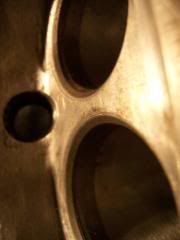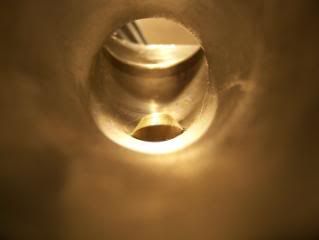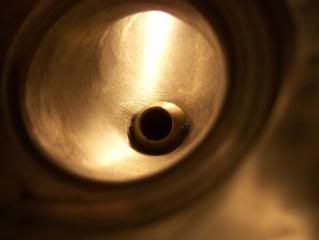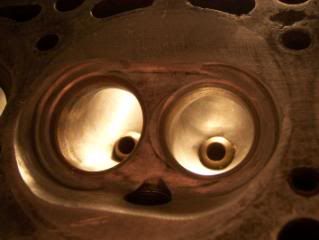Hello Guy,
As you prompted me last week, I felt that I should get the X1/9 properly rolling roaded, if only to check that fuelling was correct. But I also wanted to get an idea of power and torque, and to gauge improvements.
To summerise the engine, after 1.) Setting the cam timing correctly to straight up / split overlap
2.) Changing the exhaust silencer to a George Polly type…….
I had really not improved matters on the jetting of the carbs. I then…..
3.) Lengthened the exhaust primary tubes from 23” to 30”
This seemed to get an immediate improvement, by moving the “resonance” in the induction down the rev range by about 1,000 rpm. I felt that the car was able to take the bigger air corrector that we had been trying to use, and that fuelling was better with the car more willing to rev. I then
4.) Opened out the chokes from 32mm to 34mm.
The resonance moved back up the rev range about 300 rpm, but the engine felt more willing to rev higher. i.e. it felt that it was still producing power higher in the rev range.
I checked fuelling with a lambda sensor and multi-meter, and reckoned that it was fine all through the range, on part throttle and full. WRONG
OK, the company I used is local to me, and mainly chosen due to me thinking I had the fuelling correct already, and I only wanted a power run / fuelling check. Happily the operator Paul says he learnt to jet carburettors directly from a certain Mr Vizard.
As a reminder the carb settings were;
Mains - 130
A/C's - 170
Emulsion tubes - F24
Chokes - 34mm
Pump Jet - 50
Idle Jet - 50
Well the initial run up was disappointing. The car had felt really good on the road, but the figures told a different story. Fuelling was very rich at part throttle, and mid range, and still rich at top end at full throttle.
We swopped to a 200 air corrector which immediately saw that part throttle was good, but the mix was lean throughout full throttle, especially above 5,000rpm.
The end jetting which is spot on between 5,000 rpm till 7,500 rpm is :-
Mains - 140
A/C's - 200
Emulsion tubes - F24
Chokes - 34mm
Pump Jet - 50
Idle Jet - 50
But…Mid range till 5,000 rpm (full throttle) has been richened to 11.6:1 AFR. Part throttle seems OK

- Power plot at final jetting
- Austec Power plot.jpg (24.89 KiB) Viewed 17805 times
Several issues identified by Guy still persist. There are several other points to mention….
1.) Despite very different jetting, the original rich mid range / leaner (correct) top end compromise still exists
2.) The engine was almost as sensitive to change of air corrector in the mid range 3,000 till 5,000 rpms as the higher ranges, despite “Classic” advice to the contary (Weber tuning manual for example)
3.) Whilst the headline power figure is still around the same as when I started out, the overall area under the torque curve is less, due to the torque coming up later
4.) There is a big dip in the torque curve from 4,000 rpm till 5,000 rpm that was ‘hardly’ present before
5.) Bigger chokes ‘feel’ that they have made a difference (better) to top end breathing, but the figures say otherwise
So conclusions….
Well Guy is the expert and I’m hazarding guesses here, (though educated by this site guesses)
1.) The cylinder head is not flowing enough air for the cam i.e. The reason the torque curve is essentially flat, is that at about 5,000 rpm the head is flowing all it can, where as the cam, working with the exhaust and induction wants to shift more air through the valves. There are several pieces of work that Guy has produced and posted, and other threads that have appeared on this site since I built my engine. As a point of reference, my ports are 28.5 mm wide by 25mm tall at the narrowest point. The Big valve head prepared for Dr McMullen by Guy has 31.5mm by 30mm I believe. Also advice to Andy was to make the ports parallel to 33mm.
2.) Although just looking at the power /torque curves, some may say that the engine is now less powerful, and the previous measures haven’t worked, I’d dispute that, and say that the fact that the ‘resonance’ now occurs at lower rpms and that the torque comes on more progressively, and that I have a decent size air corrector all show that the exhaust was a culprit, but just not the only one?
Guy, I know that you have said in previous posts that if the measures taken didn’t work, then I needed to get the head and cam up to you for evaluation. Unfortuately I need that car to get to work on the odd occasion, so this isn’t possible at the moment. But as always your comments and any advice are greatly appreciated.
Regards, James






